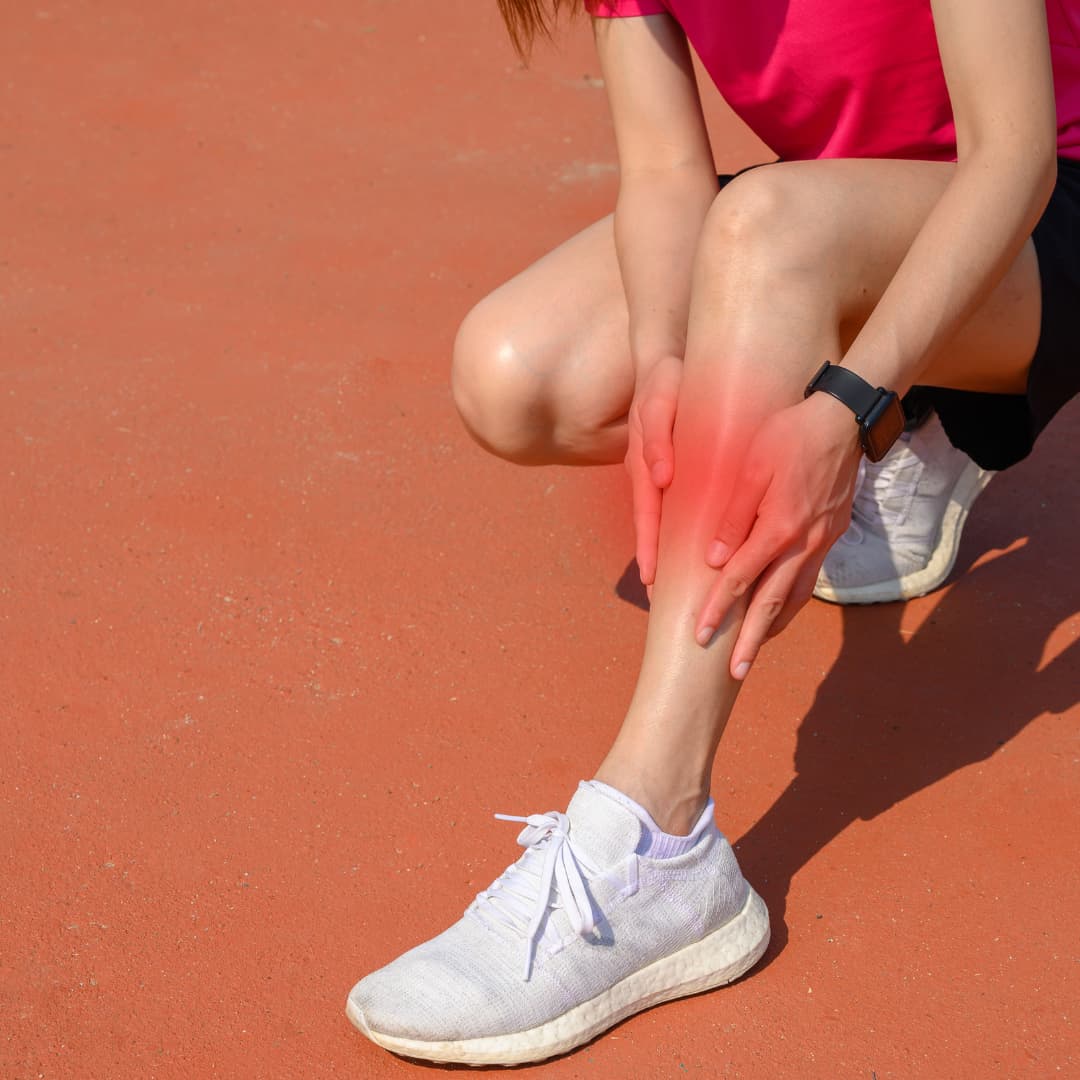Shin Splints Causes & Treamtent
What are Shin Splints?
Shin splints cause pain, stiffness, and swelling along the shins, typically occurring during or after exercise. The pain may subside shortly after exercise stops or linger for several days, often feeling worse in the mornings. This condition can affect one or both legs, with discomfort centered in the lower half of the shin bone (tibia).
Other serious conditions, like stress fractures and compartment syndrome, can present symptoms similar to shin splints—and, in some cases, may require urgent attention—it’s essential to get a proper diagnosis from your podiatrist. This ensures you receive the most effective care and the best possible outcomes

Table of Contents
What Causes Shin Splints?
Shin splints pain is caused by stress or strain on the muscles attached to the shin bone, or by excessive force impacting the bone itself. This can lead to damage or inflammation in the muscles or the connective tissue surrounding the bone.
Anyone engaged in physical activity can be susceptible to shin splints, especially those participating in running-based sports that require multi-directional movements, such as AFL, soccer, rugby, basketball, and netball. The repetitive stopping, starting, and changing of direction in these sports can put added stress on the joints, muscles, and ligaments of the feet and legs.
Shin splint pain is often described as the result of “too much, too soon,” as individuals who jump into intense training without adequate preparation or warming up are more likely to develop this issue. Other contributing factors include wearing unsupportive footwear, having abnormal foot biomechanics (particularly flat feet), running on hard surfaces, abruptly changing the intensity of activities, and experiencing muscle tightness.
If shin splints are not addressed effectively and you persist in the activities that triggered the pain, your symptoms may worsen significantly and become more difficult to manage.
Priority Podiatry Clinic's Treatment Tips
- Seek a prompt diagnosis and management from your podiatrist.
- Rest, ice, stretch, and pay attention to your body’s signals.
- Select the appropriate footwear that fits your foot type.
- Use custom foot orthotics if they are prescribed by your podiatrist.
- Fully commit to your personalised treatment plan and adhere to the provided advice.
Visit Us Today
Hope Island
Phone: 07 5510 9222
Located within Hope Island Marketplace Medical & Skin Clinic, 99-103 Broadwater Ave Hope Island QLD 4212
Jimboomba
Phone: 07 5546 9766
Located Within Jimboomba Medical Centre, Unit 1/69 Cerina Cct, Jimboomba QLD 4280
Beenleigh
Phone: 07 3287 2224
Located Within Beenleigh Mall Medical Centre, Shop24A, 40/68 Main Street, Beenleigh QLD 4207
Eagleby
Phone: 07 2889 1666
Located Within Eagleby Family Practice, 5/120 River Hills Rd, Eagleby QLD 4207
Harristown
Phone: 07 4635 6111
Located Within Toowoomba Medical Centre, 146 Drayton Road, Harristown QLD 4350
Marsden
Phone: 07 3067 2370
Located Within Marsden Family Doctors, Shop 28/55-77 Chambers Flat Rd, Marsden QLD 4132
Keperra
Phone: 07 3355 4082
Located Within Keperra Medical Clinic, 14 Dallas Parade Keperra QLD 4054
Coomera
Phone: 07 5573 5663
Located Within Doctors @ Coomera Central, Shop 6, 21 Coomera Grand Drive, Upper Coomera, QLD 4209
Newtown
Phone: 07 4633 8700
Located Within Ochre Medical Centre Wyalla, Shop 20, 238 Taylor Street, Newtown QLD 4350
How Can We Help With Shin Splints
To prevent serious complications such as stress fractures, it’s crucial to pinpoint the underlying causes of your shin splints and implement strategies to alleviate the associated pain.
The initial aim of treatment is to relieve strain on the affected muscles using the RICE method: Rest, Ice, Compression, and Elevation. When applying ice, it’s important to limit sessions to 20-minute intervals, using a damp cloth as a barrier between your skin and the ice.
Your podiatrist will conduct a thorough physical assessment to determine whether abnormal foot alignment or function is contributing to your shin splints. By observing the movement of your legs and feet, we can assess whether orthotics are necessary to support proper foot function. These orthotics are custom-designed for your specific feet, much like how prescription glasses are tailored to your vision needs. At Priority Podiatry Clinic, we utilise advanced 3D scanning technology as part of our orthotic design process, ensuring a precise fit for optimal support.
Every patient presents a unique situation; therefore, treatment plans will be tailored to suit individual lifestyles, foot types, and activity levels. We can recommend appropriate footwear that fits your foot type and offer guidance on recovery strategies to help you return to your active lifestyle. Additionally, we often emphasise the importance of appropriate stretching and strengthening exercises as part of the recovery process. Generally, the earlier you address your symptoms, the sooner you can return to enjoying your favourite activities without discomfort.
Enquire Now
Not The Condition You Are Looking For?
Find out more about the conditions we treat by clicking below.
